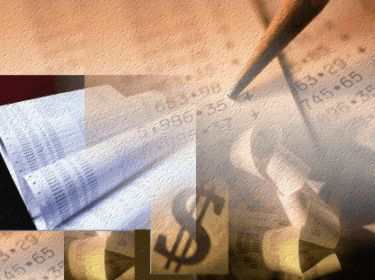
Accounting Software Strengths
Easy to use by non accountants requiring no previous Accounting knowledge and is basically a list of sales and a list of purchases on preset excel spreadsheets. Each workbook is arranged as 12 monthly spreadsheets with preset columns and uses an entry code letter to analyse both sales and expenditure.
Cash and bank spreadsheets are included as optional extras for those businesses that require them with a built in automated bank reconciliation. The sheet is designed to be completed by copying the figures from the bank statement into the bank spreadsheet and the bank reconciliation is achieved by also entering the statement total which is automatically checked against the entries made.
Monthly profit and loss account also includes a financial health check based upon an automated tax forecast to enable businesses to monitor their financial performance. By entering drawings the package then compares the net profit made with the likely tax liability plus the drawings.
Quarterly vat returns are generated for vat registered business and is also suitable for non vat registered business. To produce a vat return clients simply go to the vat file and select the quarter end date from a drop down menu and the figures for the vat return are automatically generated.
The vat calculations can be disabled by non vat registered small businesses by simply changing the standard vat rate from 17.5 to zero making the accounting software suitable for both vat registered and non vat registered businesses.
The accounting package includes a stand alone sales invoice generator which requires invoices generated to be manually input into the sales sheet.
The fixed asset schedule is preset with the capital allowance tax rates to automatically calculate capital allowances when fixed assets are entered. Depreciation is also automatically calculated with preset percentages that can be changed as required.
A major benefit of using this small business bookkeeping software is the templates are arranged in such a way to automatically generate an excel copy of the self assessment tax return. The excel self assessment tax return is arranged in the same layout as the official inland revenue form with the same box numbers making it easy to copy the figures from one to the other for submission.
Accounting Software Weaknesses
The Self-employed Accounting Software UK is based upon single entry of transactions and does not produce a balance sheet which is an optional requirement for self employed and therefore not a problem for the vast majority of businesses. DIY Accounting actually recommend clients who are self employed and wish to produce a balance sheet to use their Limited Company accounts package which does produce a balance sheet being based not on single entry but on double entry principles. The small business accounting software is suitable for a single tax year, the latest being 2007-08 and does not cater for accounting periods other than April to April. There are benefits in anyone self employed adopting the standard April to April financial year as this avoids tax allowances from two separate years being a feature of the accounts. When used by small businesses using the cash accounting system the bookkeeping entries to the sales and purchase sheets must be entered according to the dates money is paid or received rather than the dates invoices were issued. At the end of the financial year any invoices not yet entered require to be listed to adjust the final profit and loss account figures. This a major disadvantage if using the vat cash accounting scheme rather than the Accounting Software being reviewed.
Very Low Priced
At £12.99 the accounting software is basically available for loose change and will save many businesses the need to employ an accountant potentially saving hundreds of pounds in professional fees. For the financial year 2008-09 the basic package for non vat registered business is available at just £11.99 and the standard accounting software for vat registered small business is £12.99.
Other Features
The product has a stock control feature to monitor any stock losses. The small business accounting software contains a wages interface that fully integrates the DIY Accounting Payroll Software when those files are saved into the same folder as the accounting software files. Being written on excel spreadsheets all transactions are visible and capable of being changed by for example overwriting any errors as opposed to a database system that requires new transactions to be entered to reverse previous entries. The sales and purchase spreadsheets include columns for entering CIS tax deductions and payments and the certificate numbers. The CIS tax being then automatically entered on the self assessment tax return. As the small business accounting software is written on excel spreadsheets then it is essential that users have a version of excel from 1998 onwards installed to use the program. The accounting software also works fine with an Open Source spreadsheet package.
Conclusion: to Buy or not to Buy
Exceptionally good value, very easy to use and produces exactly what every small business requires, automated accounts requiring no bookkeeping skills and no previous accounting experience with the valuable end product of a fully automated self assessment tax return.
 Terry Cartwright qualified as a Chartered Management Accountant and Chartered Company Secretary in 1971. A successful business career followed as Head of Finance for major companies in the UK and several consultancy appointments. In 2006 he created DIY Accounting producing Accounting Software for self employed and small companies that use simple accounts spreadsheets to automate tax returns.
Terry Cartwright qualified as a Chartered Management Accountant and Chartered Company Secretary in 1971. A successful business career followed as Head of Finance for major companies in the UK and several consultancy appointments. In 2006 he created DIY Accounting producing Accounting Software for self employed and small companies that use simple accounts spreadsheets to automate tax returns.
